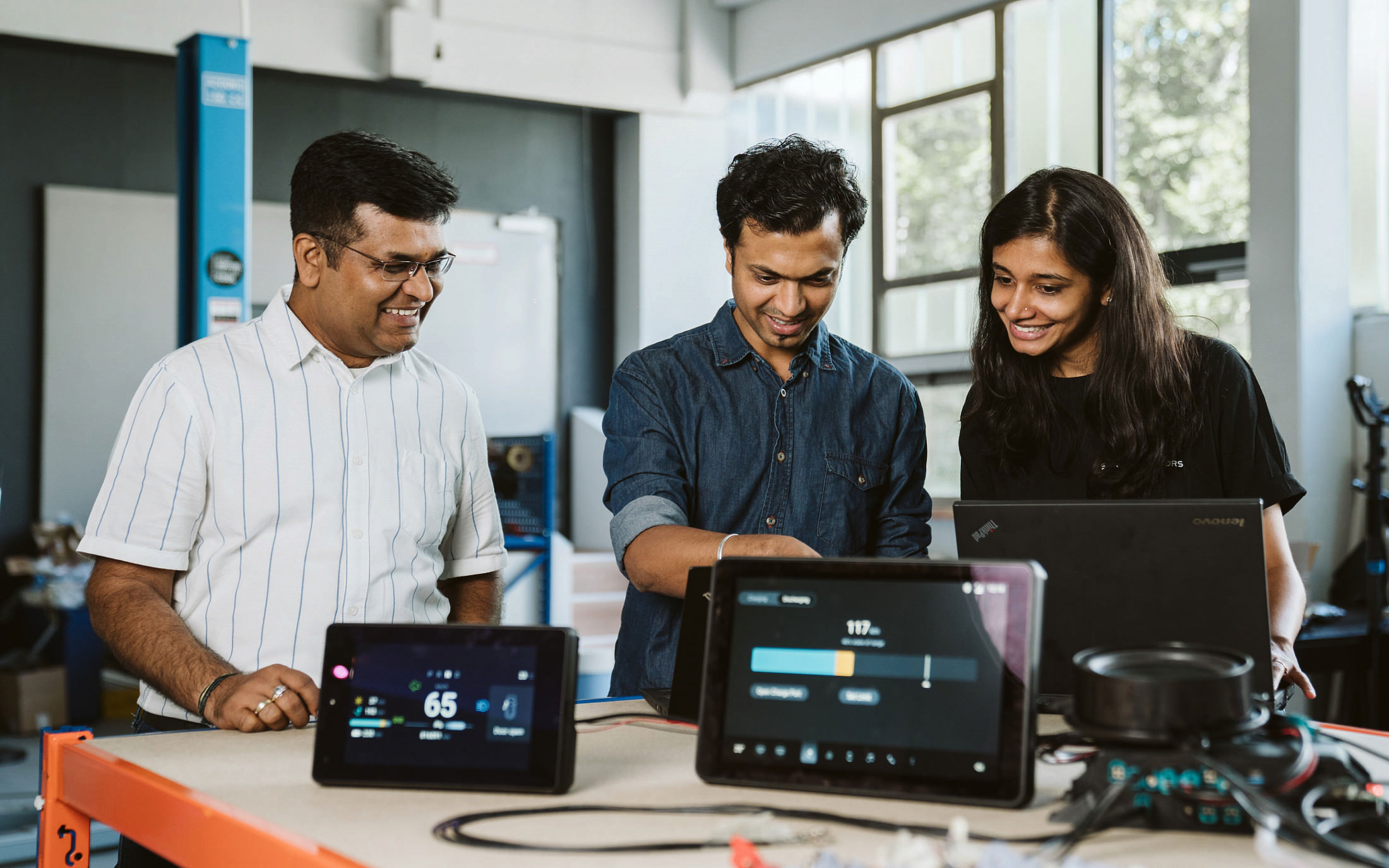In the early days of control concepts, there was an abundance of physical buttons. Today, it is possible to map a large part of the user interactions via displays, and the software can be regularly updated with new features. The art is to maintain a good balance between aesthetics, user-friendliness and ergonomics. Today, we would like to take a look at the development status of our infotainment system in the Sion – and introduce you to the team behind it.
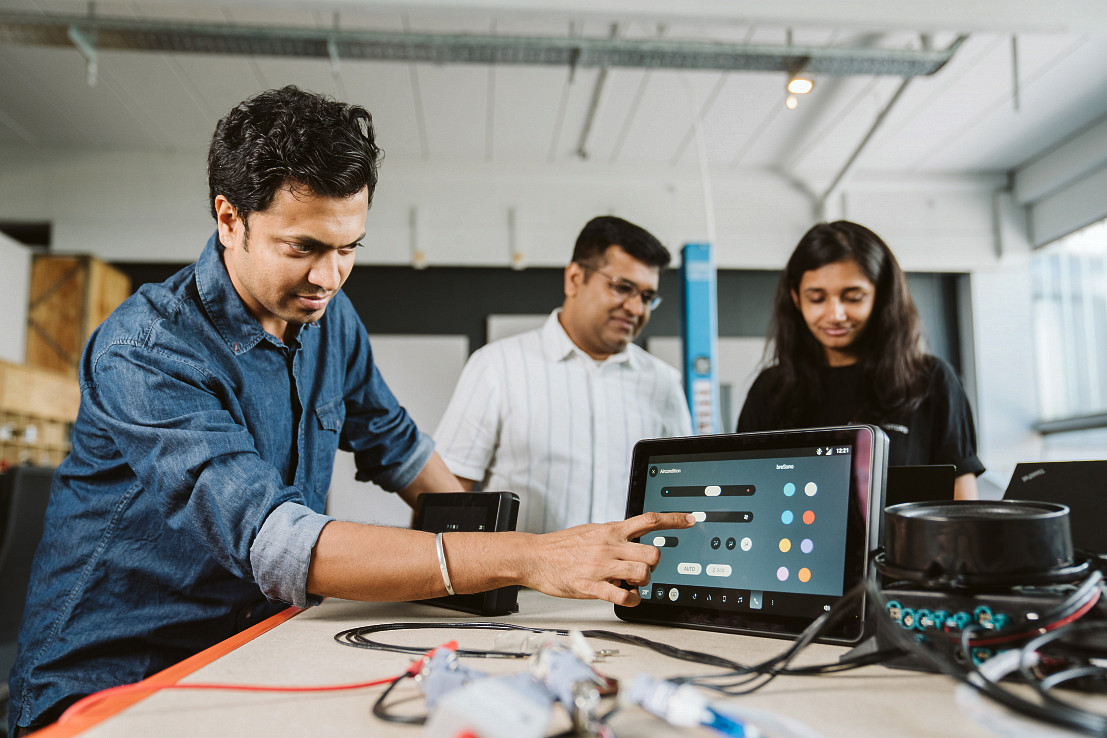
An infotainment system is designed to make all relevant and partly complex vehicle information comprehensible and easily accessible to the user. It is the visual interface to all other connected modules in a vehicle. In the case of the Sion, the sharing services, the solar integration and the bidirectional charging function are implemented here as well. The communication of the different modules takes place via a “Vehicle Networking Channel” – among other things, safety instructions can be communicated via the system.
Two Displays With One Application
In most cases, an infotainment system is being realized with two displays. On one hand, there is the instrument cluster, which is a fully digital instrument cluster located directly behind the steering wheel. Here, all relevant information such as headlight settings, range, speed and travelled distance is being displayed. It also highlights any safety and warning information. Certain standards and regulations must be applied for the instrument cluster. For example, the warnings on "not fastened", "door is open" and "handbrake is not engaged". The symbols for these notifications are also standardised. Nevertheless, with the digital instrument cluster, the possibility of customizing user specific themes and preferred display attributes is given.
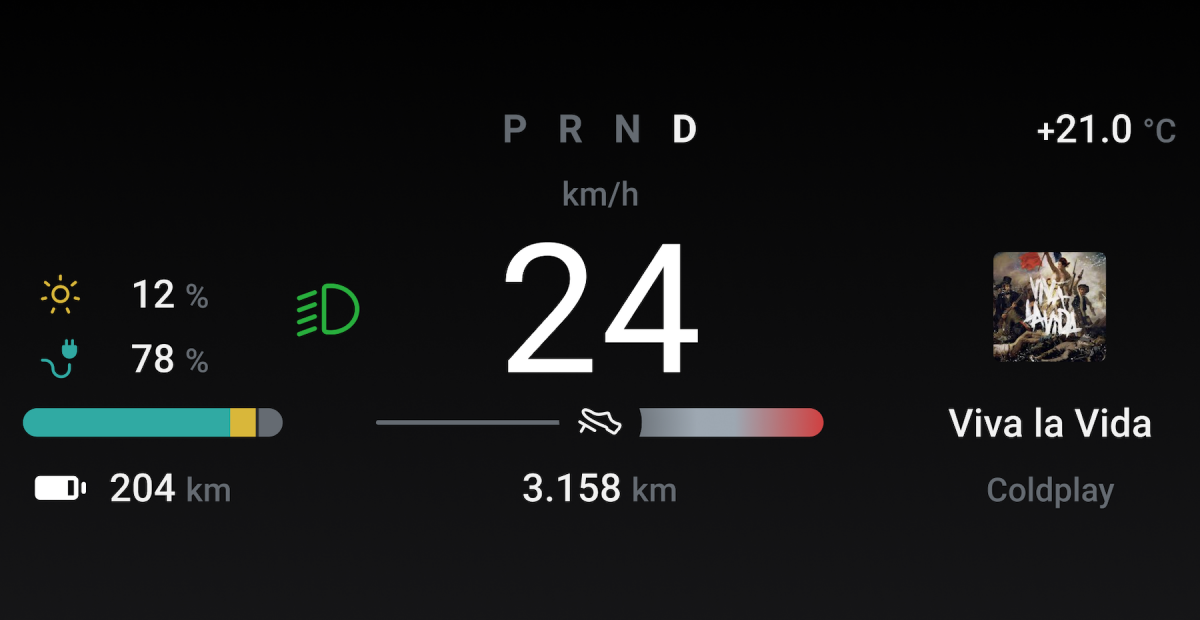
The Center Information Display (CID), the larger screen at the center of the dashboard, displays other functions. It shows the HVAC (Heating, Ventilation, Air Conditioning), the lightning of our natural air filter and charging information for example. Above all, it certainly stands for the entertainment in the Sion via the integration of your own smartphone via Android Auto and Apple CarPlay. From here you can also listen to music, via Bluetooth or one of the USB ports, make calls and view interesting statistics and other vehicle information.
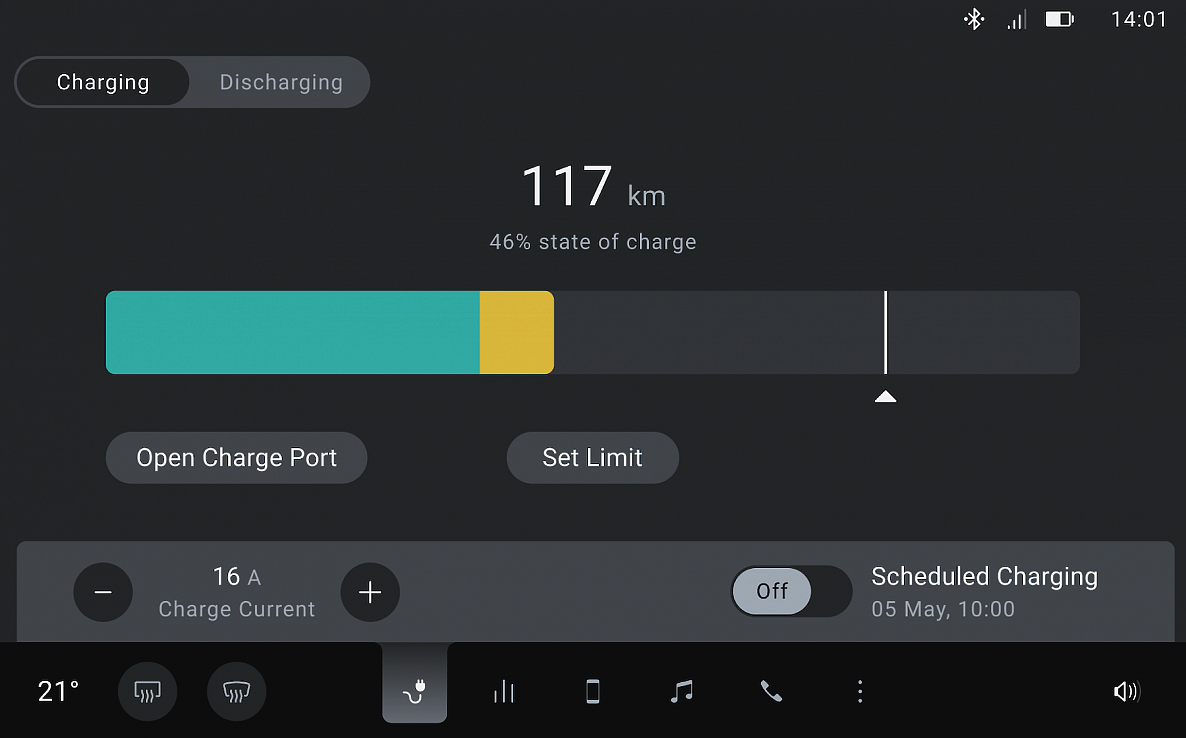
UI & UX: User Interface and User Experience
Having seen many complicated and elaborate infotainment systems on the market, we decided to take a 3-step approach for the infotainment system of the Sion. This means that the user is at any time a maximum of 3 steps away from the next stage. We have kept the user interface of the Sion infotainment system very simple and intuitive – which is exactly what you expect from a modern user-friendly interface today. Our current test system is a user interface in dark mode. In the production vehicle, there might be a brighter version of the interface to choose from.
Individual limits can be set in the infotainment system for charging and discharging energy – both related to time and the amount of energy transmitted (kWh). This feature is not only very practical in everyday life, it also allows energy to be transferred to other electric vehicles and devices via the power sharing application.
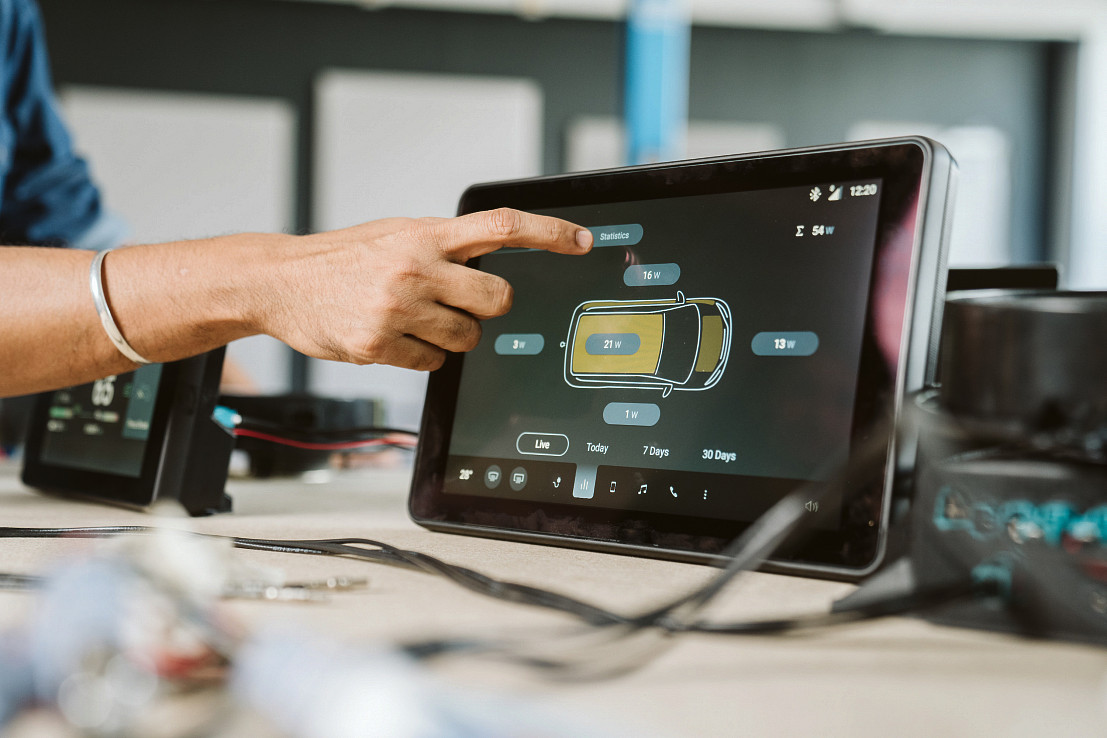
With the infotainment of the Sion we want to visualize as much vehicle data as possible. For example, the solar integration dashboard shows in real time how much energy the respective solar modules produce or how much energy was produced in the last week (7 days) and a month (30 days). Statistics on energy consumption can also be accessed in various layouts.
The Team Behind the Infotainment
Our infotainment team consists of experienced experts from the industry, who combine their expertise with our partners MTA (Head Unit and Instrument Cluster) and Elektrobit (Software Development and UI/UX). With regard to the Sion, there are many internal interfaces to the experts from the application areas Mobility Services, Power Sharing and Solar Integration. Parts of the infotainment software are also being tested inhouse. More on that topic here:
https://www.youtube.com/watch?v=NNuJBjmGBxE
Infotainment systems of conventional vehicles are usually an additional cost factor. Since the Sion will only be produced in one version, our infotainment is already included in the vehicle price. Our challenge is to make the system affordable without compromising on user relevant features. Our focus is therefore: simple, minimalistic and fast. And thanks to the "Over The Air" function, the Sion will be able to install software updates to the infotainment and many ECUs without a visit to the repair service. By the end of the year, some functions will already be demonstrable in our new prototypes.
